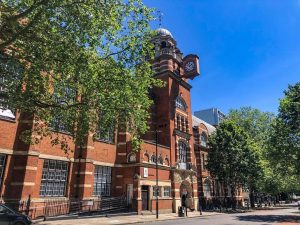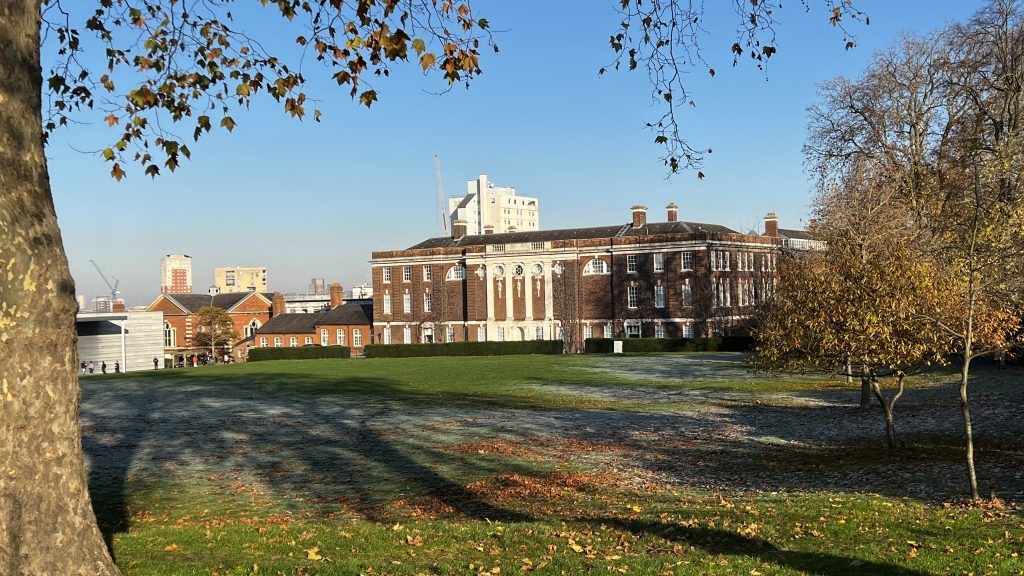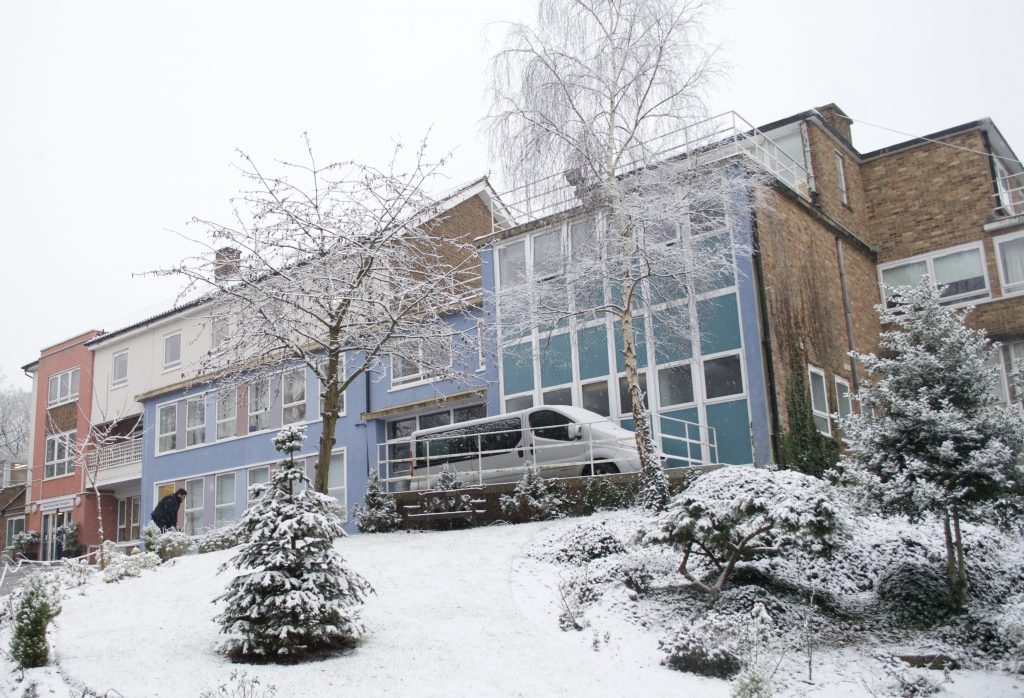Professor in User Experience (UX) Engineering, City St George’s, University of Londin, 2024-to date

I co-lead the Masters programme at Goldsmiths in User Experience Engineering, a new programme that has intakes in January and September. In this programme we take an Engineering Design approach to UX, with students joining us to enhance their careers as UX Designers, Engineers or Researchers.
I teach “Computing the User Experience” and “Ai for Designers” and am involved in student projects and student recruitment.
Senior Lecturer, Goldsmiths College, University of London, 2016 – 2024

I was, until April 2024, course director for the Masters programme at Goldsmiths in User Experience Engineering, where I had overall responsibility for the students on the programme, the curriculum, administration of the programme and line manager for the staff teaching on the programme.
I taught “Computing the User Experience”, “Human Factors” and “Applied Topics” I previously taught on courses such as “Web Development”, “Software Projects”, “Database Systems” at undergraduate level, and “Use of Computers” at foundation level.
Head of Technology, Nash College, Livability 2014 – 2016

I managed the use and development of Assistive Technology, Information Technology, Social Media and Learning Resources at Nash College. So I oversaw the running of the core server and network infrastructure and the deployment of assistive technologies at the College including:
* Voice Output Communication Aids (VOCAs)
* Environmental Controls
* Switch access and alternative interaction techniques including eye gaze tracking
We were in the initial stages of exploring the deployment of telecare technologies to enhance the care given to our residential students.
I was also responsible for the eSafety of our students and was working through the process of gaining 360°Safe accreditation
Research Fellow & Lecturer, University of Dundee, 1992 – 2014

The computing department at the University of Dundee evolved with the discipline over the years but has always sought to apply the best of computing to real world problem, Applied Computing. I was invited to join the team in Dundee for the follow up to the IPSNI project, the IPSNI II project, where we sought to apply the theoretical aspects explored in the previous project in practical simulations of what would become multimedia technology as we know it today. This has followed by various projects looking at specific aspects of accessibility and technology use in education and health.
Having completed the Masters thesis in Dundee where we had a working eye gaze tracker I could now embark on a PhD, studying part time whilst continuing to work on research projects. This process took 7 years but I was able to graduate in 2001 and won a post as a lecturer. Teaching databases, I have developed an interest in the fact that data holds stories, and that stories contain data. This is a unifying theme of the computing that underpinned my research today. Ultimately though, the research that I do has to do with finding the best technology that fits people in the context that they are in.
Research Assistant, Katholieke Universiteit Leuven (KUL), 1989 – 1992

In the mid 1980s as digital media technology was emerging as the paradigm of the future and was becoming available on personal computers and home technologies, the European Commission became concerned about the possibility that people with disabilities could become further marginalised if their needs were not considered from the conceptualisation and design phases of technology development. The difficulties experienced by hearing aid users attempting to make phone calls with a GSM phone was a timely reminder of the type of problems that could occur. For this reason they invited people known to be active in technology and disability issues to form a consortium to bid for money to explore this topic. The IPSNI consortium was formed with partners in Finland, Italy, the Netherlands, Belgium and UK, and was contracted in 1988. I moved to Belgium to work on the project as a research assistant. I was able to apply the techniques for functional decomposition and analysis to model a generic multimedia terminal that could be implemented as, for example, a smart TV, a desktop media station, a mobile phone or even a car interface. Interestingly that model still has validity more than 25 years later. As Leuven is only about 15 miles from Brussles I was in a strong position to spend time working with the team assembled by the European Commission on the definition of the embryonic research programme that would later become TIDE, Technology Initiative (EEC) for Disabled and Elderly people. I was also invited to help set up the Human Factors group with a focus on use of technology for disabled people within the European Telecoms Standards Institute (ETSI). One major incentive for taking a job at KUL was the opportunity it gave me to take a Masters degree in Biomedical Engineering. My thesis was an exploration of eye gaze tracking as a way for severely disabled people to interact with technology.
Training Manager, Reading ITeC, 1984 – 1989

In 1984 the European Commission, through the European Social Fund, put in place an action research programme as a follow up to the International Year of Disabled People (1982). The key question to be answered was, what was the route into work for someone who had a disability or who became disabled? The question was to be answered through practical intervention projects in each country in the European Union. Reading Borough Council was successful in bidding for one of the projects based on an intervention to provide vocational training in the use of IT in business and commerce. I was employed to establish this training scheme alongside the existing provision for young people at Reading ITeC. Over a period of 6 years, about 120 people were trained in IT based skills that coincided with their aspirations and past employment history where appropriate, gaining recognised vocational qualifications in the process. Over 70% of the graduates subsequently found work which refuted the position of critics who had claimed that these disabled people were unemployable. The people who did find the greatest difficulty in getting a job were those with no previous working experience. For these we set up a desktop publishing and business information bureau where graduates could be employed for 6 months. This made them eminently employable as desktop publishing was in its infancy and access via dial up links to information sources was only just becoming available.
Technical Author, Ferranti Computer Systems, Bracknell, Berkshire: 1983 – 1984

During the Falklands war, a number of important, and often outstandly simple but clever modifications were made to the computing systems on the ships of the British Navy. Part of my job was to ensure that these were documented in detail. The challenge was to make a whole complex system understandable quickly so that any faults could be understood and rectified successfully in an emergency. Lives depended on us getting this right. The approach taken was to present the system functionality at progressively detailed levels of decomposition, and map the functions to the hardware and software that enacted the function. In essence, we were attempting to start with the big picture and working towards the detail, always answering the quest, “what are you trying to say?” Whilst at Ferranti, I had the chance to use the Xerox Star document production system. The revolutionary technology changed authoring, production of graphics, typesetting, document production and printing overnight. Xerox visited the department and studied our working practices; they did an ethnographic study. Then they delivered a system which modelled our practices in every significant protocol and detail. What we previously had done by moving papers between people we now did by moving files between terminals connected to centralised servers and printers. For the first time in any commercially available computer system, we accessed those through sharp clear windows interfaces which we manipulated with a mouse. 30 years later I would maintain that this was best technology that I have used because it fit the people and the workflow seamlessly.